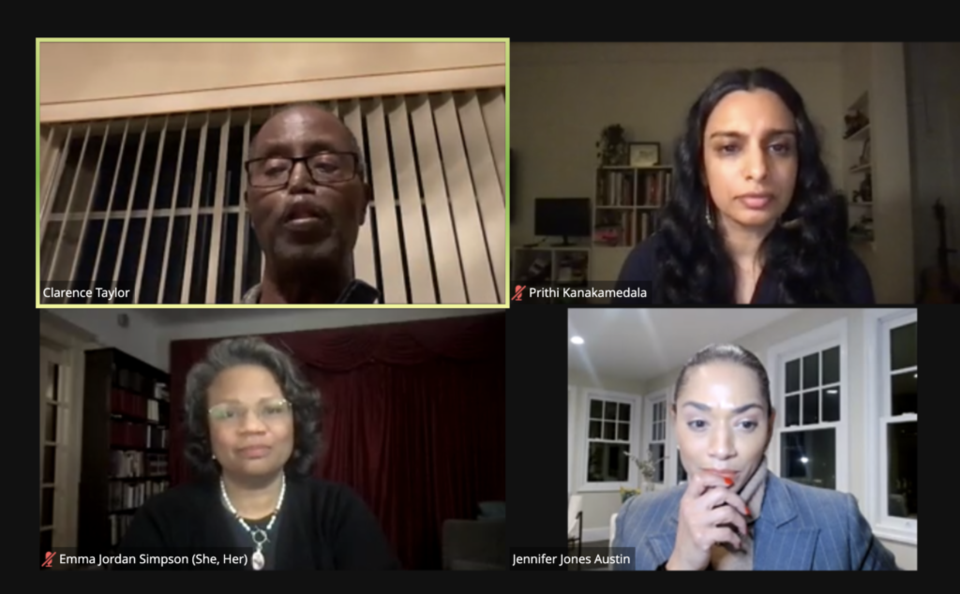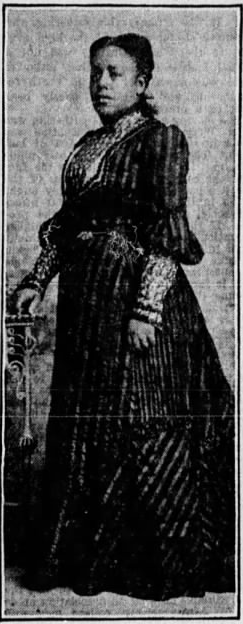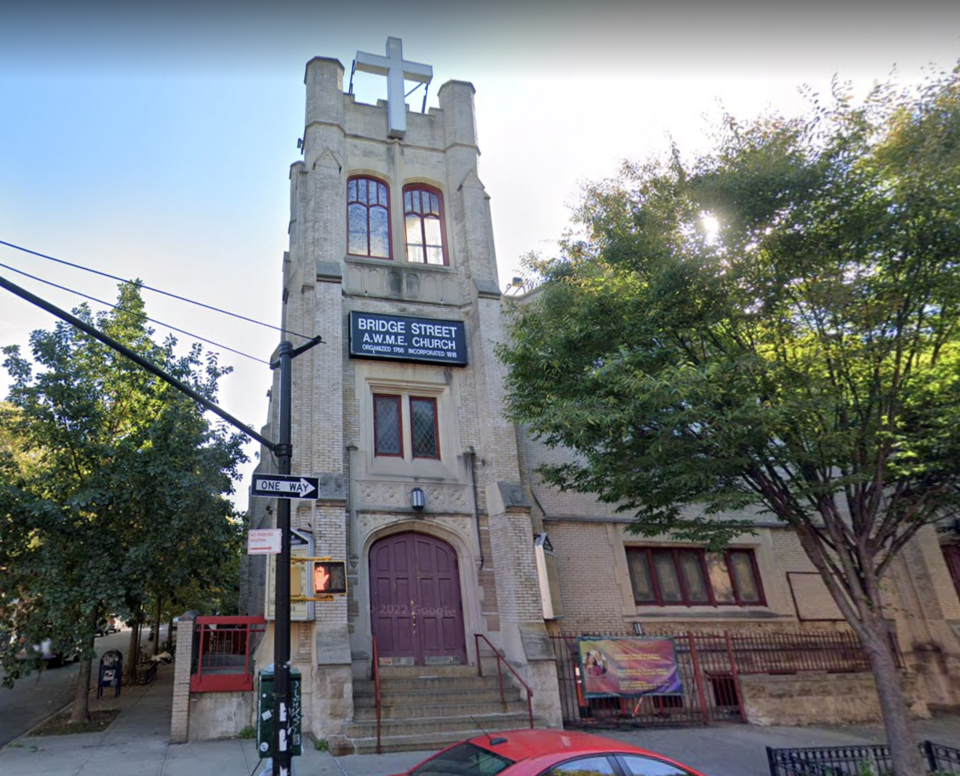During its 100-year celebration, the Brooklyn NAACP is hosting a series on its longstanding relationship with the Black church in Brooklyn.
"Partners in Struggle: Brooklyn NAACP and the Black Church" is a two-part panel discussion series featuring historians and faith leaders to explore the past, present and future of the Black church and its relationship to the NAACP and its mission to fight racial injustice. The series is co-hosted by the Center for Brooklyn History with the Brooklyn Public Library.
On Tuesday night, the first of the two events was held virtually.
Moderated by historian and professor Dr. Prithi Kanakamedala, the discussion featured author and professor emeritus of History at Baruch College Dr. Clarence Taylor, Federation of Protestant Welfare Agencies CEO Jennifer Jones Austin and reverend at the Concord Baptist Church of Christ Rev. Dr. Emma Jordan-Simpson.

The history of the Black church in Brooklyn can be traced back to the founding of the Bridge Street AME Church in 1818 in Weeksville. The church was founded by former members of the Sand Street Methodist Episcopal Church in Manhattan, who fled the church due to racial discrimination.
Another early Black church in Brooklyn was Concord Baptist Church, the first Black Baptist church in Brooklyn. Concord was founded in 1847 by Sampson White, the pastor of the historic Abyssinian Baptist Church in Harlem, which was also originally founded in response to Black worshippers being segregated from white churches.
Churches like Bridge Street and Concord became spiritual homes for Black communities, as well as the center of all Black life.
“It wasn't just out of protest that some of these churches formed. People wanted their own space,” Taylor said. “Churches became spaces for people to worship, but also for people to gather socially and for education.”
Bridge Street AME opened a school for Black children in 1827, the same year the last slaves in New York State were freed.
Though most Black churches from the 19th century were headed by men, as remains the case today, women played an integral role in these institutions and were the driving force behind the church’s involvement in activism, the panelists noted.
Alice Wiley Seay, a member of Concord Baptist Church, founded the Empire State Federation of Women’s Clubs, an organization affiliated with the NAACP that sought to improve the lives of Black women across the United States. The organization is known for caring for Harriet Tubman during the final years of her life.
“The community of women in the church were the ones that kept the wheels on the bus. The preacher got up to preach, the preacher may have given counseling, but it was the women of the church who were the conscience of the church in many respects and really held the church accountable to the community,” Jones Austin said.

When the Brooklyn chapter of the NAACP was founded in 1923, many of the pastors of Black churches in Brooklyn became members, and their congregations followed suit.
“Much of the membership of the Brooklyn NAACP came from these churches. So, the churches were vital for keeping the Brooklyn NAACP going,” Taylor said.
By the mid-20th century, the Brooklyn NAACP had become prominent in the fight for racial progress in the country.
Milton Galamission, a Presbyterian minister, and then-head of the education committee of the Brooklyn NAACP led "Freedom Day," a protest against segregation in New York City public schools.
The protest was one of the largest civil rights demonstrations of the 1960s, with nearly half a million students opting to stay away from school that day in support.
But with such a rich history, the relationship between the Black church and social justice movements is not what it used to be, Jordan Simpson said. The socio-political needs of the Black community are different today than 50 or 100 years ago, and younger generations are no longer flocking to churches for community.
“Still today, while we may not be physically in shackles, people of color are still experiencing structural economic deprivation, said Jordan Simpson.
“I think the church has to critique itself and really engage in reflective analysis. What is our role and our purpose in this moment? Is it different than it was when the early churches were birthed?”
Brooklyn NAACP Chapter President L. Joy Williams said churches have shifted away from focusing on political activism to providing social services like food pantries or after-school programs. These programs may provide immediate solutions, but she said there is a fear the church has lost its political voice in addressing deep-seated civil rights issues within society.
“If you're only servicing the end result, rather than what's causing the issue in the first place, you will be in a perpetual and increasing state of having to help or address issues,” Williams said.
Still, Tuesday's panel expressed hope that the relationship between the Black church and organizations like the Brooklyn NAACP can be reimagined and reenergized. Panelists called for younger generations to have more involvement in community organizations.
“Every generation has to fight its struggles and to use the resources that it has. And it doesn't matter if it's a big church or if it's a storefront church or a big steeple church. Join something, and be a part of addressing these issues.”
Part two of the series, focusing on the future of the relationship between the Brooklyn NAACP and the Black Church, will be held at the Dweck Center at the Central Library on February 27. Speakers will include Pastor Gilford T. Monrose, Rev. Kimberly Council, Rev. Anthony L. Trufant, and Dr. Robert M. Waterman.
Register here.




